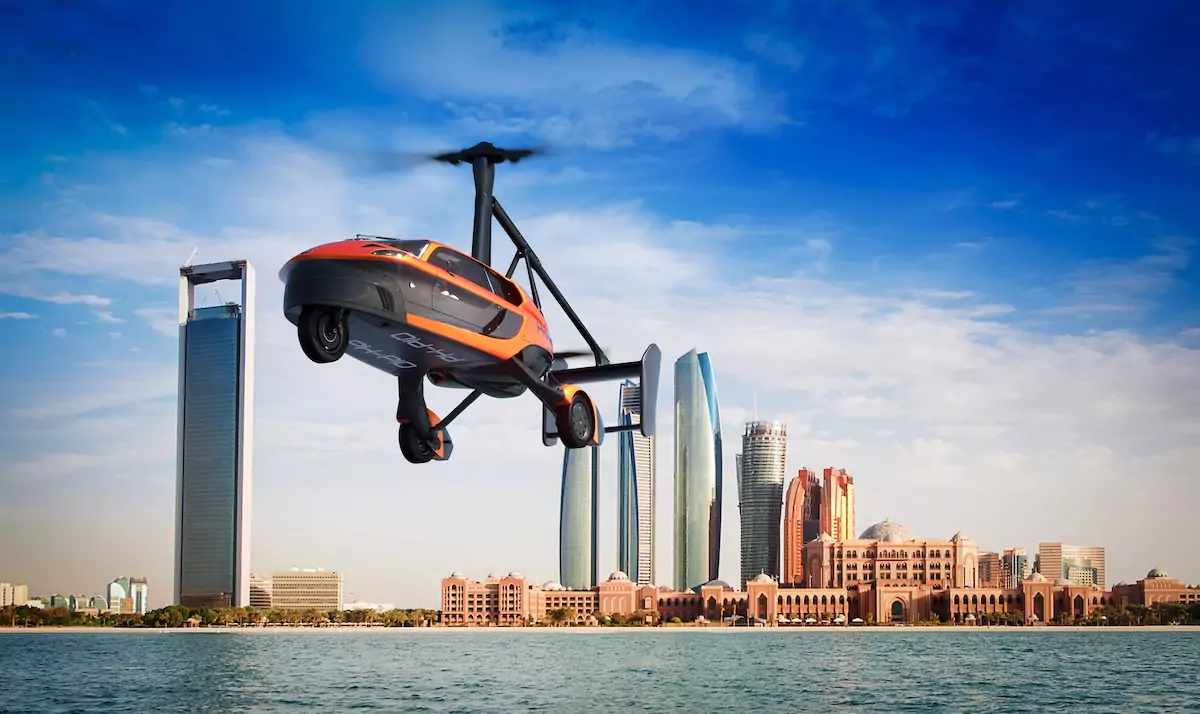It wasn’t just sleek supercars that were drawing the attention of car spotters at the iconic Fairmont Hairpin last week. Stealing some of the limelight was the PAL-V Liberty, a revolutionary hybrid that effortlessly shifts between driving and flying. In Monaco’s world of luxury and innovation, this cutting-edge vehicle is captivating onlookers and piquing the interest of forward-thinking investors.
Robert Dingemanse, CEO and Co-Founder of PAL-V (Personal Air and Land Vehicle), was invited to Monaco by Sir Stelios Haji-Ioannou to address an Air League Monaco event. The occasion allowed this trailblazing entrepreneur to spotlight his Netherlands-based company and its groundbreaking creation, the Liberty, the world’s first commercially available flying car.
With both the testing phase and road certification successfully completed, the focus is now on securing orders for the Liberty. On land, this innovative vehicle seats two passengers, offers a range of 1,315 kilometers and reaches a top speed of 160km/h. Then, in just five minutes, it can transform into a gyroplane capable of flying up to 500 kilometers at a maximum altitude of just over 3,350 metres.
Monaco Life’s Cassandra Tanti spoke with the man some have dubbed the “Elon Musk of low-altitude flying” to explore the practicality of this groundbreaking concept, which could be in the skies within a year.
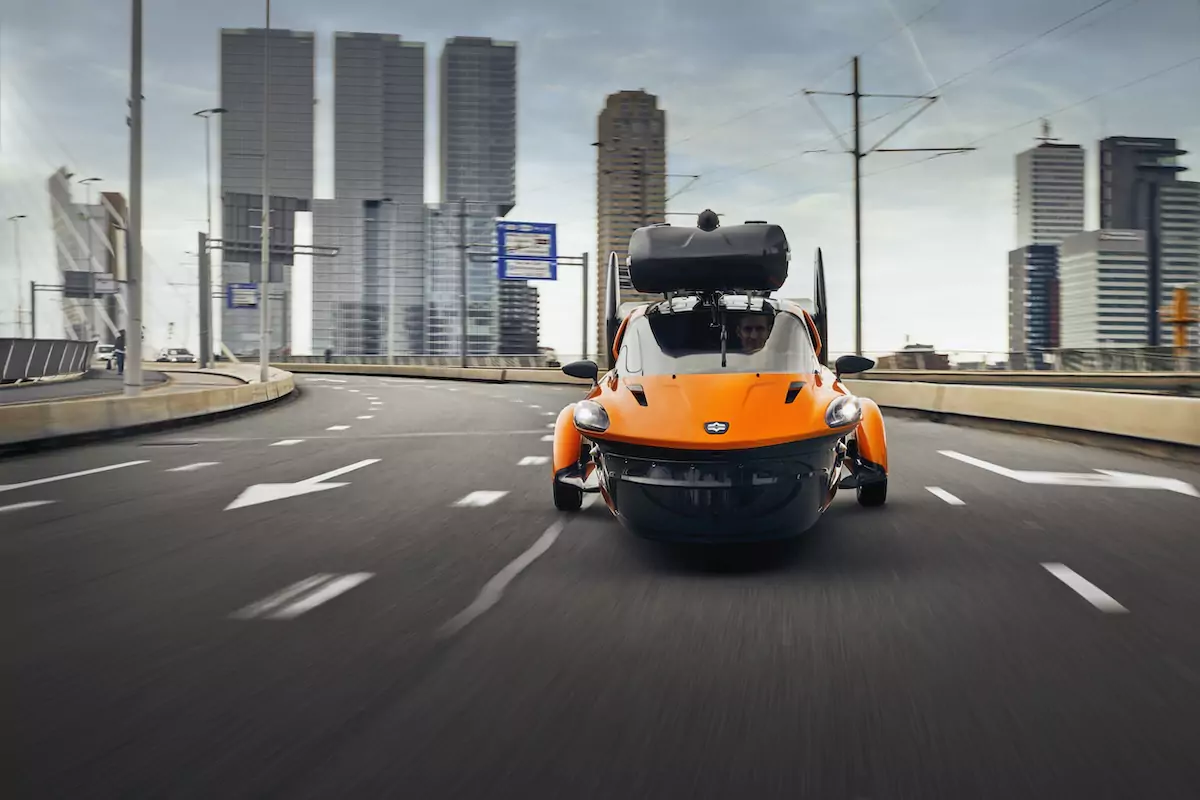
Monaco Life: Let’s start with the obvious question: Why a flying car?
Robert Dingemanse: The idea actually originated from something practical. First off, we don’t even call it a “flying car” anymore. Why? Because everything that flies nowadays is called a flying car, which causes confusion.
We’re in the business of sustainable flight-drive solutions. What makes our vehicle unique is that it can fly and drive, which is much more versatile than one that just flies. Flying, especially at low altitudes, hasn’t been a mobility solution so far – it’s been more of a hobby or sport. People fly recreationally on weekends, but they rarely use flying to get somewhere specific.
Our vehicle can take you from door to door by combining flying and driving. With traditional flying, you often leave a car, plane or helicopter behind, and that adds hassle. Another big advantage is weather flexibility. If the weather takes a turn for the worse, which happens often despite forecasts, you can drive part of your journey until it clears up and take off from another location.
This eliminates much of the hassle associated with private flying and makes it a viable mobility option. That’s why the market for flight-drive solutions is much bigger than for helicopters or planes.
Who is looking for this kind of transport solution in their lives?
More than half of our current order book consists of governmental or professional customers. Examples include law enforcement, first responders and water control. One recent application is firefighting. With our vehicle, these experts can fly to the scene quickly, assess the situation from above and direct ground crews more effectively. It’s faster, safer and cheaper than using helicopters.
Similarly, farmers in Australia see the PAL-V as an easy way to get around their property or to travel into town to get supplies. It has numerous applications, depending on people’s needs.
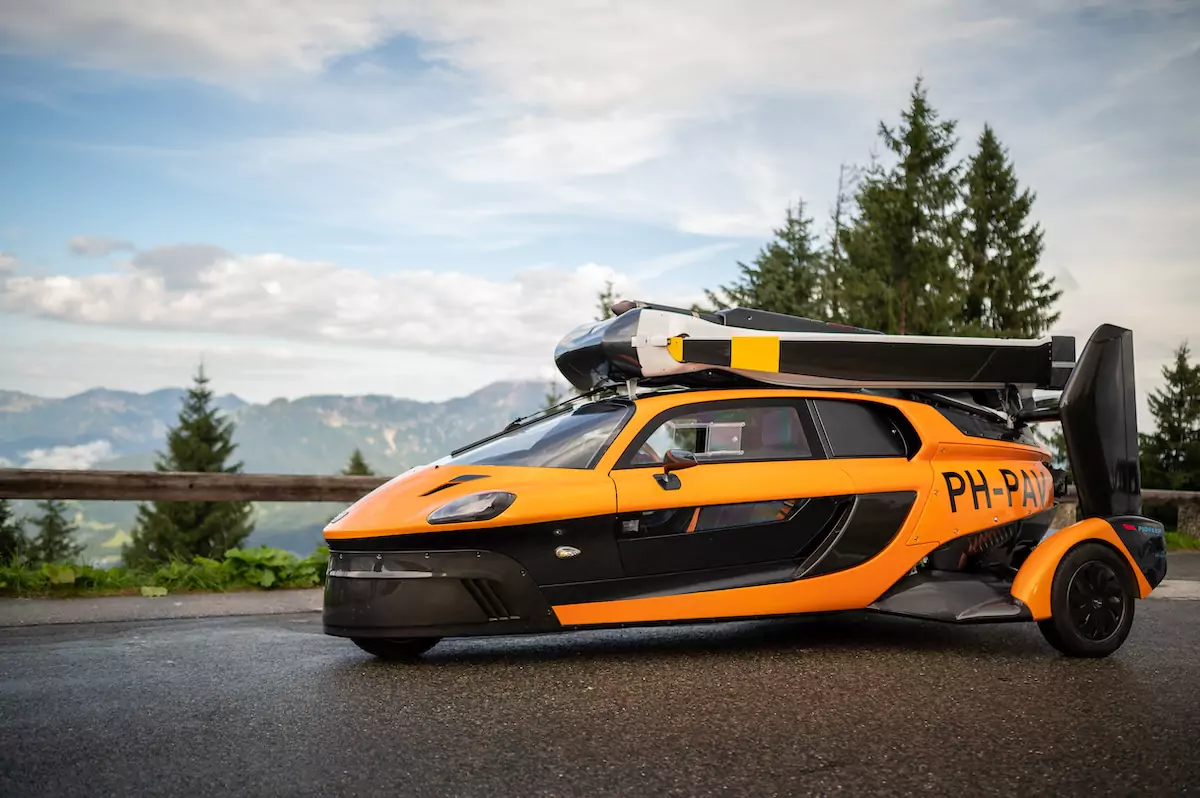
You mentioned derivatives of the platform. What does that mean?
The platform we’ve developed allows us to create various versions of the vehicle. The first derivative is the Liberty Pioneer Edition, which is the first commercial flying car ever produced. It’s a limited, numbered edition, and it will likely have historical value in the future. This is what we are exhibiting here in Monaco.
We can also create professional versions for specific uses. For instance, police might need specialised cameras and communication devices, which we can integrate into aviation-certified models.
What about sustainability? What fuels does it use?
The current models use sustainable fuels, like biofuels, or standard gasoline. We’re working with fuel distributors to ensure availability at small airfields for our customers.
In the future, we anticipate moving toward hydrogen, ammonia or hybrid solutions. While battery technology is advancing, it’s not yet viable for flying long distances. A battery-powered version might only fly 50 to 70 kilometers, which isn’t practical.
How practical is it for someone to use the flying car? For example, what about access to airstrips or airports?
The flying car is designed to be highly practical and convenient. Accessing airstrips is often much easier than people realise. In Europe, for instance, there are tens of thousands of small, underutilised airstrips, and in countries like Germany, the average person lives within 20 kilometers of one. Many of these airstrips are rarely used, and in places like the UK, private airstrips exist that haven’t seen activity in years.
Using the flying car typically involves driving a short distance to one of these smaller airfields. Unlike large commercial airports, which require advance scheduling, reserved slots, and strict operational procedures, smaller airfields are much more accessible.
Once you arrive at an airstrip, the transition from driving to flying is quick and seamless. The vehicle switches from car mode to flight mode in just a few minutes. You can then fly to your destination, covering distances of up to 500 kilometers or more, and land at another small airfield nearby. From there, you simply drive to your final destination. This eliminates the need for expensive airport transfers or worrying about leaving vehicles behind.
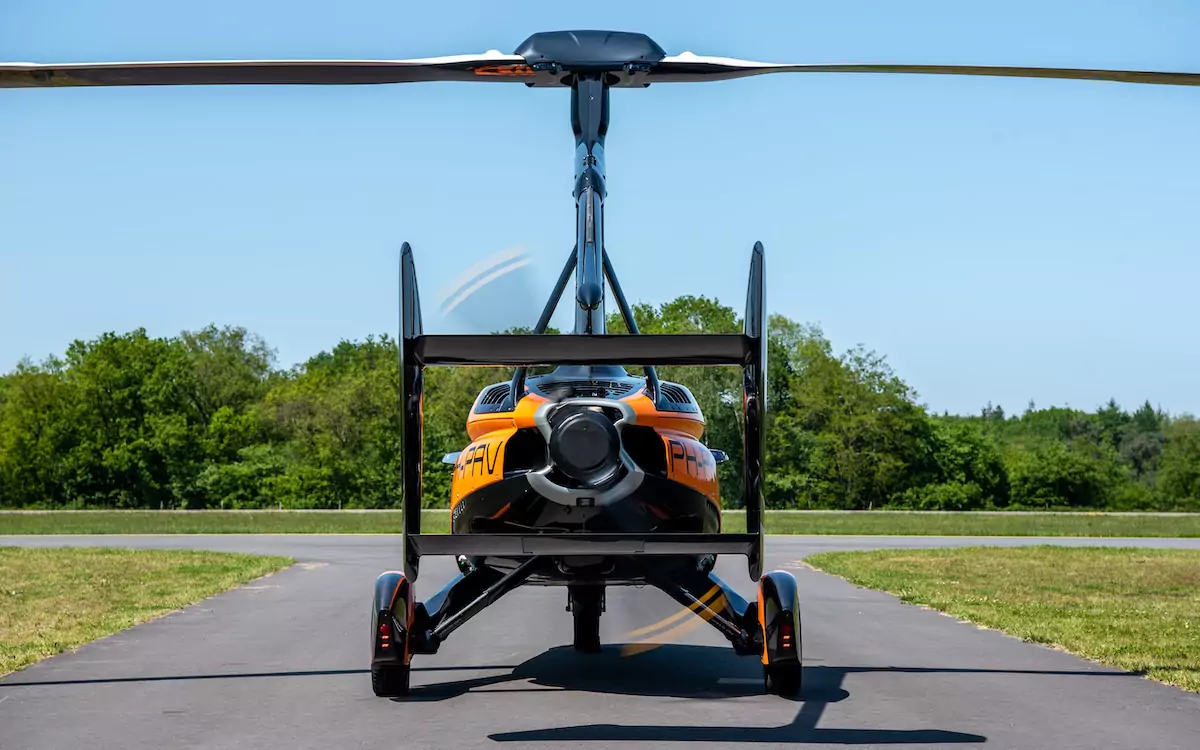
What about regulation? How will this be controlled in terms of airspace?
Our vehicle complies with existing aviation regulations. In the air, it’s considered a standard plane. You can fly in uncontrolled airspace without a flight plan or higher in controlled airspace with one. Most small airstrips don’t require special clearance, so it’s straightforward to operate.
How does someone get certified to fly the PAL-V?
Operation requires a sport pilot license, as it is classified as a light sport aircraft under existing aviation regulations. For someone unfamiliar with flying, the process of obtaining a license is straightforward and similar to getting a private pilot’s license.
The first step is our ground school training, where you’ll learn the basics of aerodynamics, navigation, weather conditions and air traffic rules. This theoretical training is followed by practical flight lessons with an instructor, covering everything from takeoffs and landings to emergency procedures. Depending on the country’s regulations, most individuals need to complete between 20 to 30 hours of flight training to qualify. Finally, you’ll need to pass a written test and a practical flight exam to demonstrate your knowledge and competence.
To make the process as smooth as possible, we’ve partnered with certified aviation schools that offer tailored training programs specifically for our vehicle. These schools ensure that customers not only meet licensing requirements but also feel confident operating a vehicle that seamlessly transitions between flying and driving.
In fact, you will be surprised at just how easy it is to fly a gyroplane and how smoothly it soars through the sky. If you consider that a gyroplane cannot stall and that it practically floats in the air, your flying experience will be relaxed and highly addictive.
What stage are you at in terms of production?
We’ve finished testing. Now we’re focused on production. Everything is being assembled in the Netherlands, with our supply chain sourced entirely from Europe.
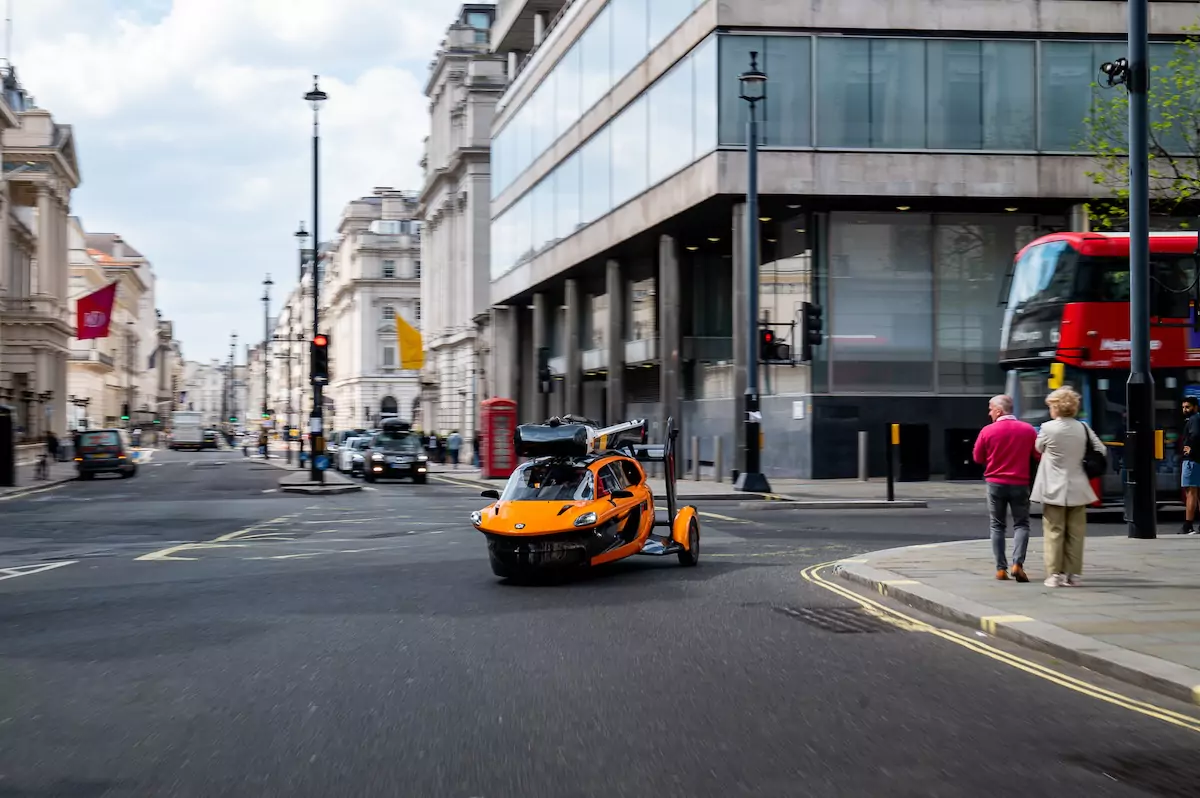
And the price?
The limited edition starts at €500,000. The standard version will cost between €400,000 and €450,000, depending on the region and specific requirements.
Are there particular regions where demand is higher?
There’s global interest, but we’ve focused initially on Europe. For example, China has shown significant interest, as they’ve identified low-altitude flying as a future market worth trillions. We’re also seeing demand from the Middle East, where we’ve received orders for vehicles to be used as escort vehicles in Dubai.
What’s the timeline for deliveries?
We expect the first operational customers in Europe by 2026. We’ve already sold out the first year of production in the Netherlands.
What’s next for the company?
Our focus is on fulfilling pre-orders, expanding globally and continuing development. We’re also attracting private investors, which is why we’re here in Monaco. Sir Stelios invited us to showcase the vehicle and explore opportunities for partnerships and investment.
What’s been the reaction here in Monaco?
The response has been fantastic. We’ve received serious interest from buyers and potential investors.
You’ve come a long way. When did you start this journey?
We started flying the prototype in 2012. Aviation innovation typically takes two generations, but we’ve managed to bring this to market in about 16 years.
Any final thoughts on where this is headed?
The potential is enormous. We’re ahead of the competition in the flight-drive market and expect this technology to revolutionise mobility. The plan is for the PAL-V to be fully automate in 10 years.
Monaco Life is produced by real multi-media journalists writing original content. See more in our free newsletter, follow our Podcasts on Spotify, and check us out on Threads, Facebook, Instagram, LinkedIn and Tik Tok.
Main photo source: PAL-V
